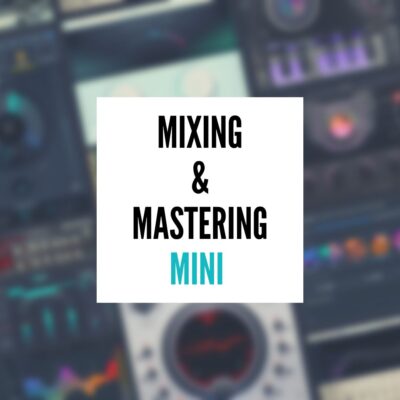Welcome to another deep dive into the world of music production. I’m Matty, and today, we’re exploring the nuanced art of Mixing with FabFilter plugins. Whether you’re a seasoned producer or just starting out, understanding how to use these tools effectively can significantly elevate your sound. Let’s break down some advanced techniques that will transform your tracks, ensuring clarity, punch, and that professional sheen.
Organizing and Preparing Your Session
Before we even think about adding effects or tweaking EQ settings, the first step in any mix is to organize and prepare. This might seem mundane, but it sets the foundation for a smooth mixing process. Here’s how I like to approach it:
- Color Coding: I start by color-coding each track. This not only speeds up my workflow but also helps me visually separate different elements of the mix. For instance, I use green for all music elements like keyboards and guitars, yellow for drums, and blue for bass tracks. This simple step prevents confusion and makes the mixing process more intuitive.
- Using Buses: Busing similar tracks together is a game-changer. It allows you to apply effects or adjustments to multiple tracks simultaneously. In my sessions, I typically create separate buses for drums, bass, and music. This not only keeps things organized but also provides more control over the mix’s overall dynamics and balance.
Key Takeaway: The initial setup of your session can drastically affect your mixing efficiency and effectiveness. Spend time on this step to ensure a smoother workflow as you move forward.
Master Bus Processing: Setting the Stage for Loudness
Once our tracks are neatly organized, it’s time to set up the master bus. This is crucial because the master bus will influence the overall sound of your mix. Here’s how I handle this critical step:
- Initial Loudness Setup: I begin by setting a target loudness level on the master bus. This approach helps me anticipate how the mix will sound when it’s finally loud enough for release. I typically aim for a loudness around -9 LUFS for hip-hop tracks, which is relatively standard for the genre. This early adjustment ensures that I don’t encounter surprises in loudness at the end of my mixing process.
- Limiter: I always start with a limiter. This might go against the traditional ‘mix quietly, then master loudly’ philosophy. Still, it works for me because it helps me understand how the limiter will affect my drums and other dynamic elements right from the start.
Key Takeaway: Your master bus setup isn’t just about achieving the right loudness; it’s about setting up a sonic environment where every element can perform at its best. Starting with the end in mind ensures that no element gets lost or overly compressed as you build your mix.
Dynamic EQ and Side Chain Compression: Clarifying the Mix
Diving deeper into the mix, let’s talk about handling dynamics, particularly how to make your kick drums punch through without drowning out the bass, which is a common challenge in many mixes.
- Dynamic EQ: One of the first things I do is set up a dynamic EQ on my kick and bass tracks. The idea here is to allow the kick to cut through by automatically reducing certain frequencies on the bass track only when the kick hits. For example, if my kick is peaking around 60 Hz, I’ll set a dynamic notch on the bass EQ to dip at this frequency whenever the kick plays. This technique ensures that both elements can coexist without muddying the low end.
- Side Chain Compression: This is another technique I employ to manage the relationship between the kick and the bass. By setting up a compressor on the bass track that reacts to the kick drum, the bass temporarily lowers in volume whenever the kick hits, thus giving the kick more prominence. I find this particularly effective for genres that demand clear, powerful bass lines that do not interfere with the punch of the kick.
Key Takeaway: The use of dynamic EQ and side chain compression are powerful tools for managing the energy and space within your mix. They help maintain clarity and ensure that each element of your track has its moment to shine without stepping on the others.
Saturation and Parallel Compression: Enhancing Texture and Impact
After ensuring that our foundational elements are not clashing, it’s time to add depth and character to the mix through saturation and parallel compression. These techniques can be transformative, adding warmth and punch that make the mix more engaging and lively.
- Saturation: I often use saturation to add harmonic richness to drums and bass. FabFilter Saturn is a go-to plugin for this purpose because it offers a variety of saturation models—from tube to tape to transformer—that can enhance different aspects of the sound. For drums, I might use a mild tube saturation to add warmth, or a transformer model for a bit more edge and presence. The key is to apply it subtly so that it enhances rather than overwhelms the sound.
- Parallel Compression: This is a technique I swear by, especially for drums. By mixing a heavily compressed version of the drums with the uncompressed signal, I can add significant punch and body to the drums without losing the dynamics of the original performance. This process involves setting up a separate bus for a compressed signal, blending it until I achieve the desired level of impact. It’s like having your cake and eating it too—you get the punch of heavy compression with the dynamic feel of the original track.
Key Takeaway: Saturation and parallel compression are your friends when it comes to adding depth and punch to your mix. They allow you to enhance the sonic characteristics of your tracks without compromising the integrity of the original recordings.
Mid-Side EQ Techniques: Sculpting the Sonic Space
Mid-side EQ is an essential tool in my mixing arsenal, especially when I need to manage the stereo field and make room for vocals. This technique allows for independent adjustment of the center and sides of the stereo image, which is incredibly useful for both clarity and spatial effects.
- Creating Space for Vocals: In many mixes, particularly in genres like hip-hop or pop where the vocal needs to stand out, it’s crucial to ensure the instrumental doesn’t overpower the vocal parts. Using mid-side EQ, I often reduce some mid frequencies in the instrumental tracks to carve out space for the vocals. This can be done by applying a slight dip in the mid channel around the fundamental frequencies of the vocal, typically between 1 kHz and 3 kHz.
- Enhancing Stereo Width: On the sides, boosting certain high frequencies can enhance the sense of width and space in a mix. I tend to apply a gentle high-shelf boost to the side channels, which helps to brighten up the mix and give it a more expansive feel. This is particularly effective for synth pads, guitars, and other elements that benefit from a wider stereo presence.
Key Takeaway: Mid-side EQ isn’t just about making things sound ‘better’—it’s about making strategic adjustments that enhance the overall mix by improving clarity and depth. It allows you to manipulate the audio in a way that traditional stereo EQ cannot, providing a powerful tool for mixing in a three-dimensional space.
That wraps up our detailed exploration of advanced mixing techniques using FabFilter plugins. Each step, from initial organization to final touches, is crucial in shaping the sound of your track. Remember, the goal is not just to mix but to convey emotion and impact through your music.
If you’re interested in further discussions or need help with your mixes, feel free to reach out or comment below. Don’t forget to check out my courses and presets, available on my website, which can help you elevate your mixing game even further.





